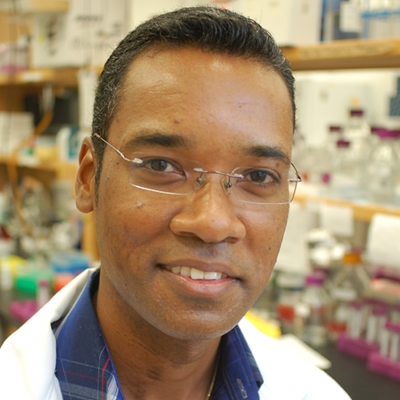
Position: Post-doctoral Fellow
Contact: jlabonne@bio.fsu.edu
Education: Ph.D York University, Toronto, Canada
Research Interests:
Packaging of DNA into chromatin allows eukaryotes to contain large volumes of information encoded in DNA sequence into a small, defined, restricted area of the cell. Chromatin is made up of repeated units termed the nucleosome which is an octamer consisting of two copies of four types of histone proteins. DNA is wrapped approximately 1.7 times around the histone octamer (Kornberg and Lorch, 1999; Jiang and Pugh, 2009). Each nucleosome is separated from the next by a linker DNA which is approximately 38 bp in human (Schones et al. 2008) and 30 bp in A. thaliana (Chodavarapu et al. 2010). However, by packaging the genome into chromatin, the cell creates a barrier to transcription of genes because DNA sequence coding for promoters, enhancers or other regulatory elements could be wrapped around the nucleosome and may not be accessible to transcription factors for initiation of transcription (Yuan et al. 2005; Jiang and Pugh, 2009). The positioning of nucleosomes across transcription start sites therefore plays a role in regulation of gene expression (Jiang and Pugh, 2009).
In maize, the mediator of paramutation1 (mop1) gene appears to play an important role during development. Mutations in the mop1 gene result in several developmental defects including reduced plant stature, barren stalk and feminized tassels. My research project consists of identifying changes in nucleosome positioning across TSS regions of 400+ selected genes in mop1 wild-type and mutant individuals. Four tissue types, including leaf, seedlings, ear shoot and immature tassel will be assayed. Expression array will also be carried out to determine if changes in nucleosome positioning are correlated with a change in expression of genes in the corresponding tissues. Exploring nucleosome positioning in different tissue types will provide a more global view of how nucleosome positioning regulate expression of a diversity of genes in mop1 wild-type and mutant progeny. Identification of genes under regulation by mop1 will also lay the groundwork for dissecting developmental signal transduction pathways that are altered in mop1 mutants. Furthermore, identifying specific changes in nucleosome positioning in mop1-1 individuals will also provide more insights on how the distribution and occupancy of nucleosome across TSS regions play a role in regulating gene expression.
References:
1. Chodavarapu et al. 2010. Relationship between nucleosome positioning and DNA methylation. Nature 466: 388-392.
2. Kornberg, RD and Lorch, Y. 1999. Twenty-five years of the nucleosome, fundamental particle of the eukaryote chromosome. Cell 98: 285-294.
3. Jiang, C and Pugh, BF. 2009. Nucleosome positioning and gene regulation: advances through genomics. Nat Genet 10: 161-172.
4. Schones, DE., Cui, K., Cuddapah, S., Roh, TY., Barski, A., Wang, Z., Wei, G and Zhao, K. 2008. Dynamic regulation of nucleosome positioning in the human genome. Cell 132: 887-898.
5. Yuan, GC et al. 2005. Genome-wide scale identification of nucleosome positions in S. cerevisiae. Science 309: 626-630







